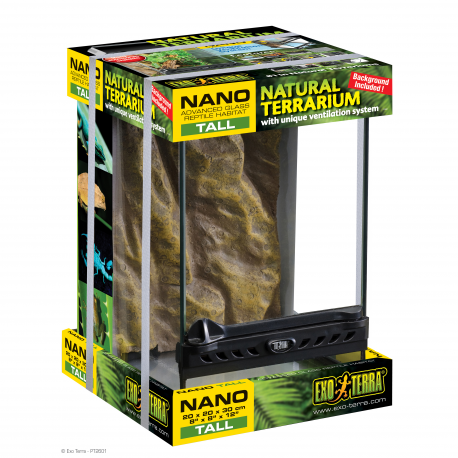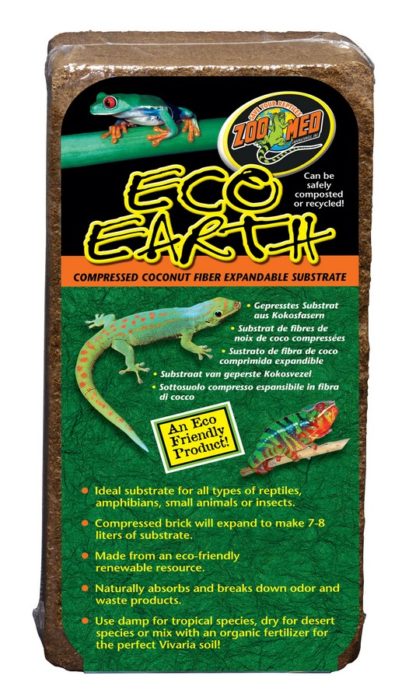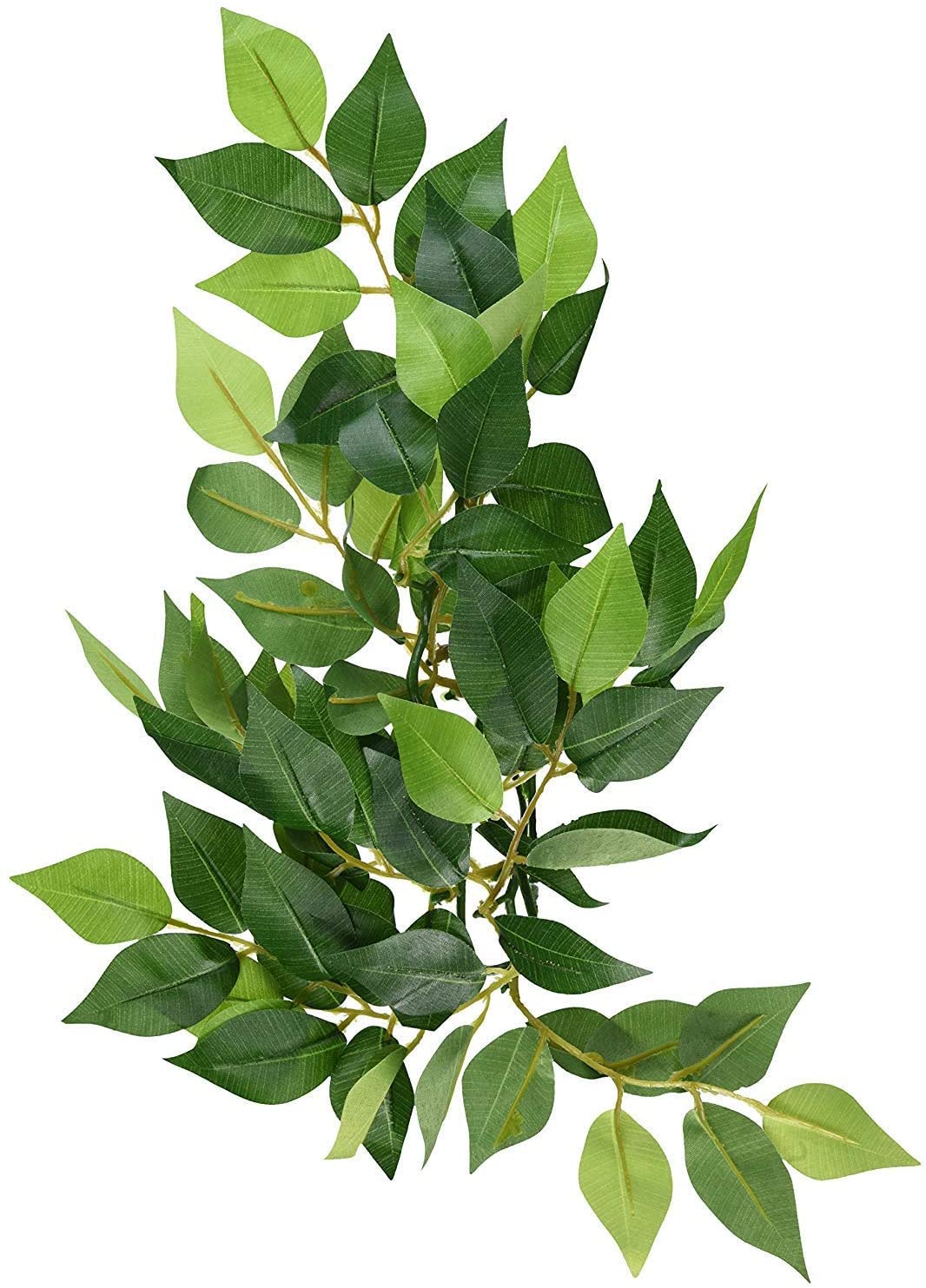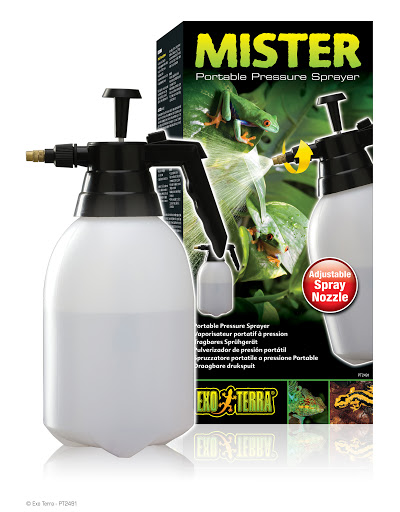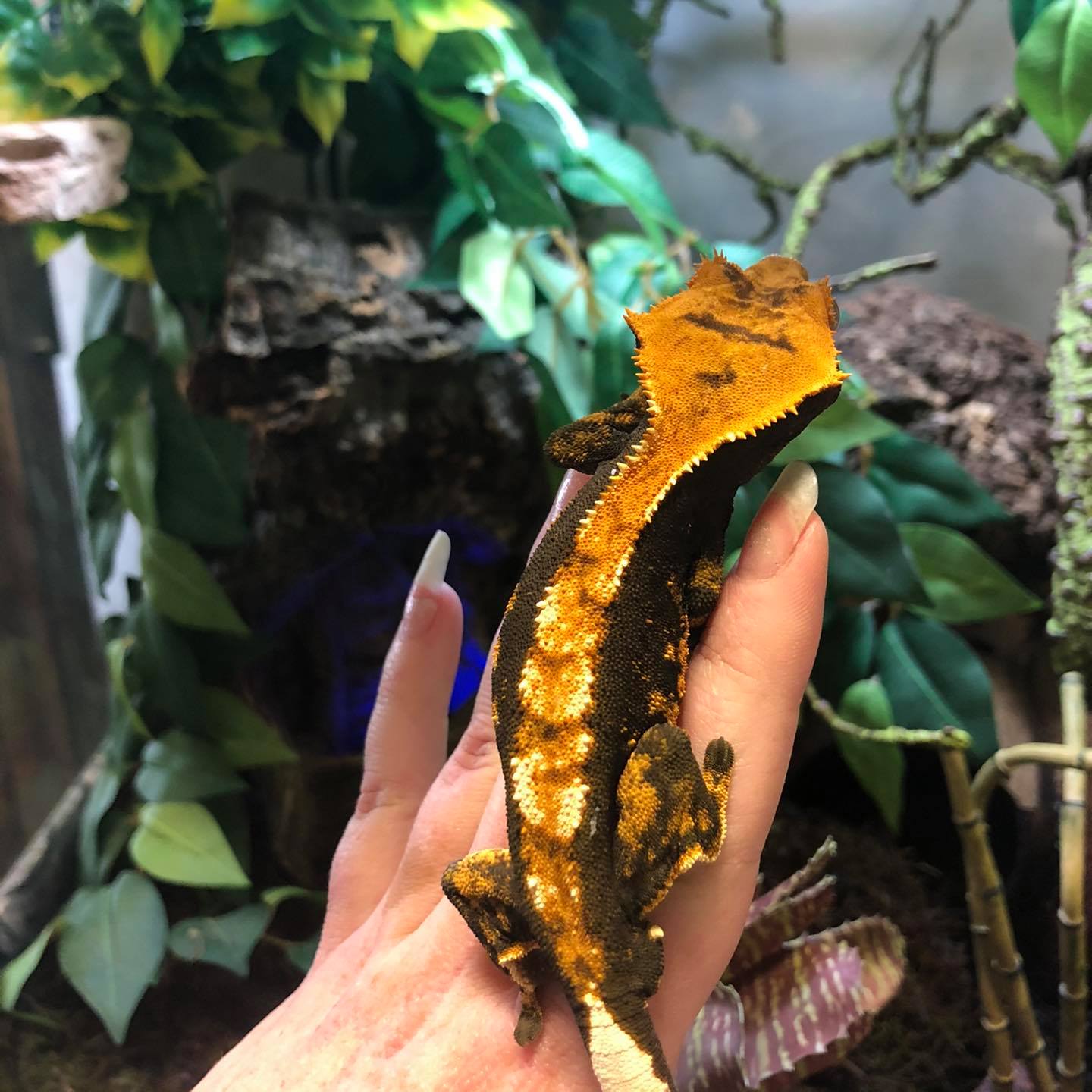
Habitat:
Terrarium: Hatchlings to 5 months, crested geckos can be housed in a 12x12x18 front opening terrarium with plants (we prefer faux plants), moist paper towels and a small food dish. Older geckos we recommend being housed in taller 18x18x24 front opening enclosures, glass or plex glass, to keep the humidity at consistent levels. We prefer Exo Terra open front tanks or Zoomed open front glass enclosures.
Substrates: With so many reptile substrates to choose from, it is essential to understand which options are safe for your geckos. Avoid substrates that can be potentially harmful if ingested. Some substrates that should be avoided: sand/calcium sands, wood chips, crushed walnut, reptile carpets etc. We like to use a moist paper towel for baby geckos and a coco mulch/soil (Eco Earth, Arcadia soils, etc.) as they get older. We use leaf litter (leaves, moss and other reptile specialty ground cover) on top of the eco earth; we then add springtails and isopods to help promote a bioactive environment.
Decor: Plants, rocks and wood branches and Meg-ledges are also highly recommended as it gives cover and security to your gecko, providing enrichment when exploring the enclosure. We prefer a magnetic food dish over a dish on the ground to encourage better eating habits and reduce the likelihood of your gecko ingesting substrate.
Heating: Crested geckos enjoy 78 to 82 (27c) degrees Fahrenheit during the day. It can drop to the low of 66f (19c) at night. In most areas, this temperature range will be reached during the year's warm months without additional heat. In summer, place crested geckos in a cool room if the temperature exceeds 87 (30c) degrees. In the cooler months, we typically use a 4-watt heat mat stuck to the enclosure's outside side. The small heat matt allows the gecko to move closer or farther away from the heat without overly drying the terrarium or disrupting the sleep cycle.
UVB: A 5% - 7%UVB has been shown to be beneficial for a few hours during the day; this can help your animal grow, hunt and process calcium more efficiently. We typically have ours from 9 am - 6 pm; we highly recommend using a timer with any lights you use to ensure a proper schedule is kept. Crested Geckos have no eyelids, and excessive light can impact sleep.
At night, a blue led bulb (no more than 15 watts) to view your animal's hunting behaviour may be used.
Humidity: A good hygrometer or thermometer/hygrometer combo meter is a valuable tool. Ideally, the humidity level should not drop below 50%. Crested geckos should get several hours of higher humidity (80-100%) every day to ensure that they shed adequately. Misting heavily once or twice a day will achieve the required higher humidity levels. It is essential to allow the cage to dry to normal humidity levels between misting. If the cage is soaking wet all of the time, problems with shedding and bacterial infections can arise. We use a fogger for 4 hours a day on the lowest setting; you should also hand mist in the morning and again before bed.
Cleaning: We clean our gecko tanks a few times a week with a water and vinegar mix or F-10 solution to remove water spots and droppings. Be sure to remove your gecko while cleaning and rinse the area well with fresh water before letting them back into the enclosure! Once a month, do a deep clean of all decor and plants by removing and soaking them for 20 minutes with an F-10 or mild cleaning vinegar solution, scrub any fecal matter and dirt; then rinse well before you put them back into the enclosure with your pet.
Co-Housing: Never Co house another species with your gecko, and after 2-4 months of age, never co house more than two cresties. Two females of similar temperament and size may be housed in a large terrarium (min. 18x18x24). Never keep two males together as they may seem fine, then one day an animal loses a limb or worse: death! At best, one gecko is exerting dominance over the other. More than one animal means one animal is going to get less food and overall be more stressed. Unless you plan to responsibly breed your animals (which is expensive and can have its own set of issues such as egg bind, and tail loss, etc.), we highly discourage housing males and females together.
Feeding:
Feeding Insects: The best insects to feed are banded crickets, wax worms and hornworms. There is some debate as to whether or not mealworms are safe to feed to crested geckos because there is a possibility of causing impaction due to the higher chitin in the exoskeleton; we choose not to feed them to be on the safe side. The insects you offer your geckos should be no thicker than the distance between the gecko's eye. All feeder insects should be dusted with adequate powdered calcium and vitamin d3. Feed insects a high-quality "gut load" diet for at least 24 hours before being offered to your geckos. Gut loading enhances the insects' nutritional value substantially; you can feed the insects dry fish flakes, leafy green vegetables, squash or Repashy bug grub.
Fruit Mixes, Insects: For many years before developing CRESTED GECKO DIET, hobbyists and breeders fed their geckos dusted crickets and supplemented fruit baby foods. The downside to this method is that there is a lot of guesswork in getting the right amounts of calcium, phosphorous, vitamins and other essential nutrients. Too much or too little of these nutrients can be deadly, particularly with fat-soluble vitamins like Vitamin A and Vitamin D3. We use Repashy or Pangea powdered foods for crested geckos. Powders are mixed to the consistency of runny ketchup and replaced every second day with fresh mixed food. Typically a baby gecko will eat .5 oz of the mixed food, and Juvenile to adults will eat 1-1.5 oz of the mixed food in two days. There are many flavours in the powder diet, and we switch up regularly to prevent our geckos from getting hooked on a certain kind (some flavours are seasonal, and this can become an issue!)
Water: Crested geckos typically drink water droplets from their enclosure sides and any plants or cage accessories. Your gecko needs to drink, which is one of the reasons it is important to mist your geckos daily. It is also recommended that a small shallow dish of clean water is present in the enclosure at all times.
Do not bathe or submerge your gecko as this is stressful and can cause your gecko to drown or drop the tail.
Handling Crested Geckos
They tolerate moderate handling even when they are relatively young; however, you should not handle geckos less than four weeks old or geckos that have recently been purchased or moved.
There is a recommended one to two week acclimation period for newly acquired geckos, which allows them to settle into their new surroundings. Once they are settled in, you can introduce your gecko to handling a little at a time. Five minutes of handling per day for the first few weeks is sufficient to allow your gecko to become used to you and become less jumpy. Start by sitting on the floor and let your gecko crawl through loose fingers and hand-over-hand. Do not squeeze or tightly hold the animal as this can cause internal damage and extra stress.
Once they are comfortable and feel safe with you, you can begin to handle them more. We recommend no more than 20 - 30 minutes of handling per day; this will not stress the gecko too much.
Do not drop or squeeze your gecko as they have soft underbellies/sides; this causes internal damage. Do not flip them on their backs for longer than a few seconds, as this can and will inhibit breathing.
Do not leave your Crested gecko unsupervised with other pets (even other geckos) and/or small children. Ensure the lid is secure and sturdy if you have cats! Crested Geckos can climb walls and glass so ensure you are in a safe location if your gecko makes a run/jump for it (they can be very fast!).
Tail Loss: Crested Geckos can drop their tails if mishandled; however, most crested geckos are reluctant to drop their tails unless the tail is pinched or squeezed. Never grab, hold or pick your gecko up by the tail! Most tail loss occurs from aggressive cage mates, accidentally closing the tail in a screen top/door or improper diet and supplements. Careful handling does not usually result in tail loss. Tail dropping is a standard defence mechanism and is not typically a medical emergency.
The gecko will recover quickly and does not require any special care unless husbandry or diet is the cause. Crested geckos are one of the few geckos that will not regenerate a new tail. Keep the wound clean, and it will heal on its own quickly. * note * if your gecko develops a tremor or shake along with tail loss, poor diet or husbandry could be an issue; please seek a qualified exotics vet!
Crested Gecko Fun Facts:
Under optimal conditions, crested geckos can live 10-20 years. They were once thought to be extinct until 1994 when found in an expedition to New Caledonia - a group of islands between Fiji and Australia! They are also sometimes referred to as eyelash geckos. Crested Geckos do not have eyelids! Instead, they keep their eyes clean and moist by periodically licking them.
We hope you enjoy your new pet; please never release unwanted animals into the wild as this will ensure death! We here at SHP are happy to rehome any reptiles if, for any reason, if you are unable to care for or keep them!
**All information in this sheet is meant as a good start for your new gecko; please also seek advice from a qualified exotic vet.** School House Pets' guide to Crested Geckos
Site by Bradley Hopkins @ SHP

